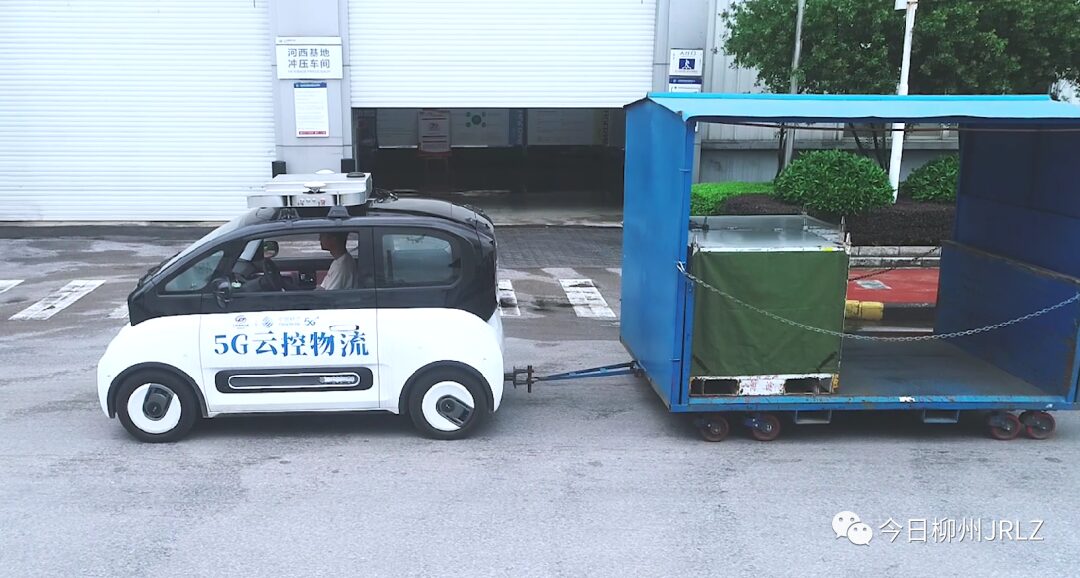

General Secretary Xi Jinping emphasized: “Accelerating the realization of high-level technological self-reliance is the only way to promote high-quality development.” With the rapid development of technology, intelligent connected vehicles have become an important development direction for the global automotive industry and a key area for competition in the second half of the new energy vehicle industry, as outlined in the national 14th Five-Year Plan. The Municipal Big Data Development Bureau deeply implements the decision-making deployment of the municipal party committee and government to implement the big data strategy, adhering to the use of new generation information technology to serve the high-quality development of the economy and society, serve the efficient governance of the government, and serve the high-quality life of the people, pushing forward the construction of a digital Liuzhou to a new level. This article aims to explore the commercialization of vehicle networking and provide suggestions to solve the current challenges, continuously nurturing and expanding the intelligent connected vehicle industry chain in Liuzhou.


1. Liuzhou Vehicle Networking Pilot Zone
Basic Overview
Vehicle networking is a product of the accelerated integration of the traditional automotive industry and the information and communication industry, playing a crucial role in achieving the transformation and upgrading of traditional industries and “overtaking on a bend.” It is significant in enhancing vehicle driving safety, improving traffic efficiency, providing travel information services, and supporting autonomous driving.
In order to implement the spirit of national documents such as the “Intelligent Vehicle Innovation Development Strategy” and the “New Energy Vehicle Industry Development Plan (2021-2035),” Liuzhou combines its industrial foundation and advantages with the goal of “assisting the transformation and upgrading of the traditional automotive industry, promoting transportation information sharing and business collaboration, and building a vehicle networking industry cluster,” actively creating a national-level vehicle networking pilot zone and establishing a replicable and promoteable “Liuzhou model” for vehicle networking. The Liuzhou vehicle networking pilot zone project (Phase I) was launched in October 2021, achieving upgrades and renovations of 79.88 kilometers of road networks, completing upgrades of 125 intersections, and creating seven connected demonstration road application scenarios, including off-site unmanned logistics scenarios, Liuzhou automotive urban logistics scenarios, and large-scale interconnectivity scenarios. In April 2023, the Ministry of Industry and Information Technology responded to the People’s Government of the Autonomous Region, supporting the creation of the Guangxi (Liuzhou) national-level vehicle networking pilot zone. The main tasks and goals of the pilot zone are: to deploy a cellular vehicle networking C-V2X network on urban roads, ensuring coordination with the development of 5G and smart cities, completing functional transformations of vehicle networking in key areas, and enhancing core system capabilities, creating an open, interconnected cloud service platform; relying on the foundation of automotive industry development, building typical commercial application scenarios, effectively developing in-vehicle terminal users, promoting shared mobility and other vehicles to take the lead in installation and use, strengthening user service experience and value benefit analysis, and creating a new ecosystem for the vehicle networking industry; deepening policy and institutional innovation, establishing a healthy and sustainable construction and operation model, improving the safety management system, and forming replicable and promotable experiences.


2. Thoughts on Development Models
Vehicle networking is entering a transformation period towards commercial application, with rapid technological iterations. However, as of now, domestic vehicle networking pilot zones mainly focus on demonstration applications, and there are no mature commercial operation scenarios nationwide. Legal road access and normalized operation are key to the commercialization of intelligent connected vehicles. Based on research findings, the following suggestions are proposed:
First, strengthen publicity and promotion to all sectors of society. Based on the established vehicle networking infrastructure in Liuzhou, fully leverage the technological accumulation and R&D advantages of local manufacturers, and timely release testing data and related evaluation reports of Liuzhou intelligent connected roads to the public, increasing acceptance across society and accelerating the promotion and popularization of intelligent connected vehicles. Strengthen the management norms for road testing and demonstration applications of intelligent connected vehicles, enhancing public awareness, understanding, and trust in autonomous driving, laying a foundation for the upcoming large-scale application of intelligent connected vehicles.
Second, improve policies and regulations, and optimize the innovation environment. As of October 2023, Liuzhou has issued 28 intelligent connected vehicle road testing/demonstration application licenses to automotive enterprises, completing approximately 13,000 kilometers of testing mileage. By using dedicated test vehicles with front and rear-mounted OBU, data perceived from roadside facilities is integrated and sent to vehicles. Commercial application scenarios such as SAIC General Wuling’s unmanned driving logistics and Dongfeng Liuzhou’s unmanned driving trunk logistics have been implemented. The next step will be to revise the “Liuzhou Intelligent Connected Vehicle Road Testing and Demonstration Application Management Implementation Rules” in conjunction with the needs of automotive enterprises for intelligent connected vehicle technological innovation, led by the Municipal Big Data Development Bureau, in collaboration with departments such as development and reform, industry and information, public security, and transportation, to support intelligent connected vehicles with remote safety operators to operate on designated public roads, gradually expanding the road range.
Third, promote the scaling of mature technology verification scenarios. SAIC General Wuling, using the Baojun new energy unmanned logistics vehicle as the transport carrier, has already traveled over 10,000 kilometers and completed over 6,000 transport tasks, forming an unmanned, intelligent, and networked logistics model; Dongfeng Liuzhou Automobile Co., Ltd. has completed the development of the “Chenglong Navigation MAX” intelligent connected electric logistics solution, demonstrating operations exceeding 30,000 kilometers with an autonomous driving ratio exceeding 99.2%. For potential scenario clients, it is hoped that relevant departments will jointly introduce policies to encourage clients to collaborate with the Guangxi (Liuzhou) national-level vehicle networking pilot zone construction and operation units (Liuzhou East City Group) and automotive enterprises to carry out electrification and intelligent transformation and operation of logistics within and between parks.
Fourth, create conditions to accelerate the technical verification of vehicle networking scenarios with commercial application prospects. For example, for highway logistics transportation, select the highway section from Liuzhou to Nanning for intelligent transformation and include it in the testing and demonstration application scope, combining it with the established vehicle networking infrastructure in Liuzhou and the implemented application scenarios to create intelligent logistics scenarios for urban roads – outer ring roads – highways, forming a closed loop for the implementation of highway commercial scenarios.
Fifth, explore vehicle networking data application scenarios. As a pilot for the autonomous region, Liuzhou combines the construction of the vehicle networking pilot zone with the exploration of market-oriented trading reforms for urban traffic data elements, guided by market demand, and in conjunction with the construction achievements of the Guangxi (Liuzhou) national-level vehicle networking pilot zone, exploring application innovations including shared mobility, time-sharing leasing, and urban traffic data element businesses, gradually building a Liuzhou operation management rating system in practice, providing successful instance support for the comprehensive implementation of public data authorized operations. Actively attract and cultivate a batch of data service enterprises in the fields of data analysis, travel services, financial insurance, etc., continuously enhancing data application and value-added service capabilities.
Sixth, strengthen the research and formulation of standards. Explore the promotion of the vehicle networking standards system construction, accelerating the introduction of local standards such as the “Vehicle Networking Roadside Infrastructure Construction Specifications.” Focus on key areas such as intelligent vehicle systems, intelligent safety systems, business standard communication systems, vehicle networking information communication, intelligent road systems, intelligent traffic facilities, intelligent parking lots, intelligent support systems, safety emergency response, and industry operation systems, continuously conduct research on technical standardization to promote industry regulation and resource efficiency sharing, laying a solid foundation for future city-wide implementation.
Seventh, strengthen reporting to seek support from the autonomous region. Strive to include the construction of the vehicle networking pilot zone in the key areas of strategic emerging industries in the autonomous region, providing technology innovation and industry innovation-related policies and financial support for the construction of the vehicle networking pilot zone. Accelerate the revision and research of relevant policies and regulations in core areas such as the access of intelligent connected vehicle products and road driving, and when the timing is right, establish a policy and regulatory system for intelligent connected vehicles citywide to better support the development of the intelligent connected vehicle industry.



